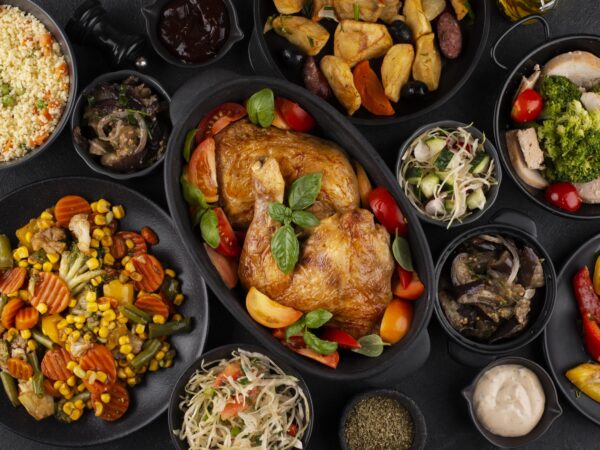Pasta is a versatile and delicious dish that can be enjoyed in numerous ways. Whether you prefer it paired with a rich, tomato-based sauce or with a simple drizzle of olive oil, pasta is a staple in many households across the globe. However, despite its widespread popularity, many people struggle to create restaurant-quality pasta dishes at home. So, what is the secret to making restaurant-quality pasta at home? In this article, we will explore a few tips and tricks that can take your homemade pasta dishes to the next level.
1. Start with the Right Ingredients
Making great pasta begins with using high-quality ingredients. While it may be tempting to opt for lower-priced options, choosing quality ingredients can make a significant difference in the overall taste and texture of your pasta. Here are a few essential ingredients to consider:
– Flour: Using high-quality flour is one of the most critical ingredients for making great pasta. Durum wheat flour, also known as semolina flour, is considered the best type of flour for making pasta due to its high gluten content. However, if semolina flour is not available, all-purpose flour can also work if it has at least 12% protein.
– Eggs: While not always necessary, adding eggs to your pasta dough can add richness and flavor. If you choose to use eggs, opt for organic or free-range varieties for the best taste.
– Olive Oil: Adding a bit of olive oil to your pasta dough can help prevent it from sticking together and add a subtle flavor. Be sure to use high-quality extra-virgin olive oil for the best results.
2. Embrace the Kneading Process
Kneading is an essential step in making pasta dough. Kneading helps develop the gluten and creates a smooth and elastic dough that can be easily rolled out. Consider the following tips when kneading your pasta dough:
– Use your hands: While a stand mixer can be convenient, kneading your pasta dough by hand can help you better sense the texture and develop the gluten.
– Be patient: Kneading pasta dough can take time, especially if you’re doing it by hand. Be sure to knead the dough for at least 10 minutes to ensure it has the necessary elasticity.
– Check for the right texture: To ensure your dough is ready, perform a ‘windowpane’ test. This involves taking a small piece of dough and stretching it out until you can almost see through it without it breaking.
3. Let the Dough Rest
After kneading your pasta dough, it’s crucial to let it rest. This allows the gluten to relax and ensures that your dough will roll out easily. Here are a few things to keep in mind when resting your pasta dough:
– Cover it up: When letting your dough rest, be sure to cover it with a damp towel or plastic wrap to prevent it from drying out.
– Resting times may vary: Depending on the recipe, the recommended resting time for your pasta dough may differ. Typically, allowing the dough to rest for 30 minutes to an hour is sufficient.
4. Roll it Out
Rolling out your pasta dough can be a tricky process, but with some proper technique, it can be a breeze. Here are a few tips to keep in mind when rolling out your pasta dough:
– Start with a flat surface: Ensure you have a large and flat workspace. A clean countertop or table works well.
– Roll in small sections: Trying to roll out a large piece of dough can be frustrating and challenging. Instead, divide your dough into smaller sections and roll each one out separately.
– Use a pasta machine: While not necessary, a pasta machine can make the rolling process easier and more uniform.
5. Cook it Correctly
Cooking pasta may seem straightforward, but there are a few things to keep in mind to ensure it comes out perfect every time. Consider the following tips:
– Use a large pot: Make sure you have a large pot of boiling, salted water to cook your pasta. This ensures that the pasta will have enough room to cook evenly.
– Cook until “al dente:” Al dente is an Italian term that means “to the tooth.” This is how pasta should be cooked – slightly firm to the bite.
– Don’t wash it: Avoid rinsing your pasta with cold water after cooking, as this can remove the starch and flavor.
6. Enhance Your Sauce
While having great pasta is essential, the sauce can make or break the dish. Consider the following tips to make your sauce stand out:
– Use high-quality ingredients: As with the pasta, using quality ingredients can make a significant difference in the flavor of your sauce. Use fresh, ripe tomatoes, and quality olive oil.
– Start with a flavorful base: When making your sauce, begin with a flavorful base, such as sautéed garlic and onions.
– Use herbs and spices: Adding herbs and spices, such as basil, oregano, and red pepper flakes, can add depth and complexity to your sauce.
7. Experiment with Different Varieties
Finally, don’t be afraid to experiment with different types of pasta. There are countless varieties of pasta available, from long and thin spaghetti to small and round orecchiette. Trying out different shapes and sizes can add a fun and exciting element to your pasta dishes.
Conclusion
Making restaurant-quality pasta at home may seem daunting, but with the right ingredients, techniques, and a little practice, anyone can create delicious and impressive restaurant pasta dishes. From choosing high-quality ingredients to using proper cooking techniques, the secret to making great pasta at home is in the details. So, next time you’re in the mood for some delicious Italian cuisine, put these tips to the test and impress your family and friends with your culinary skills.











